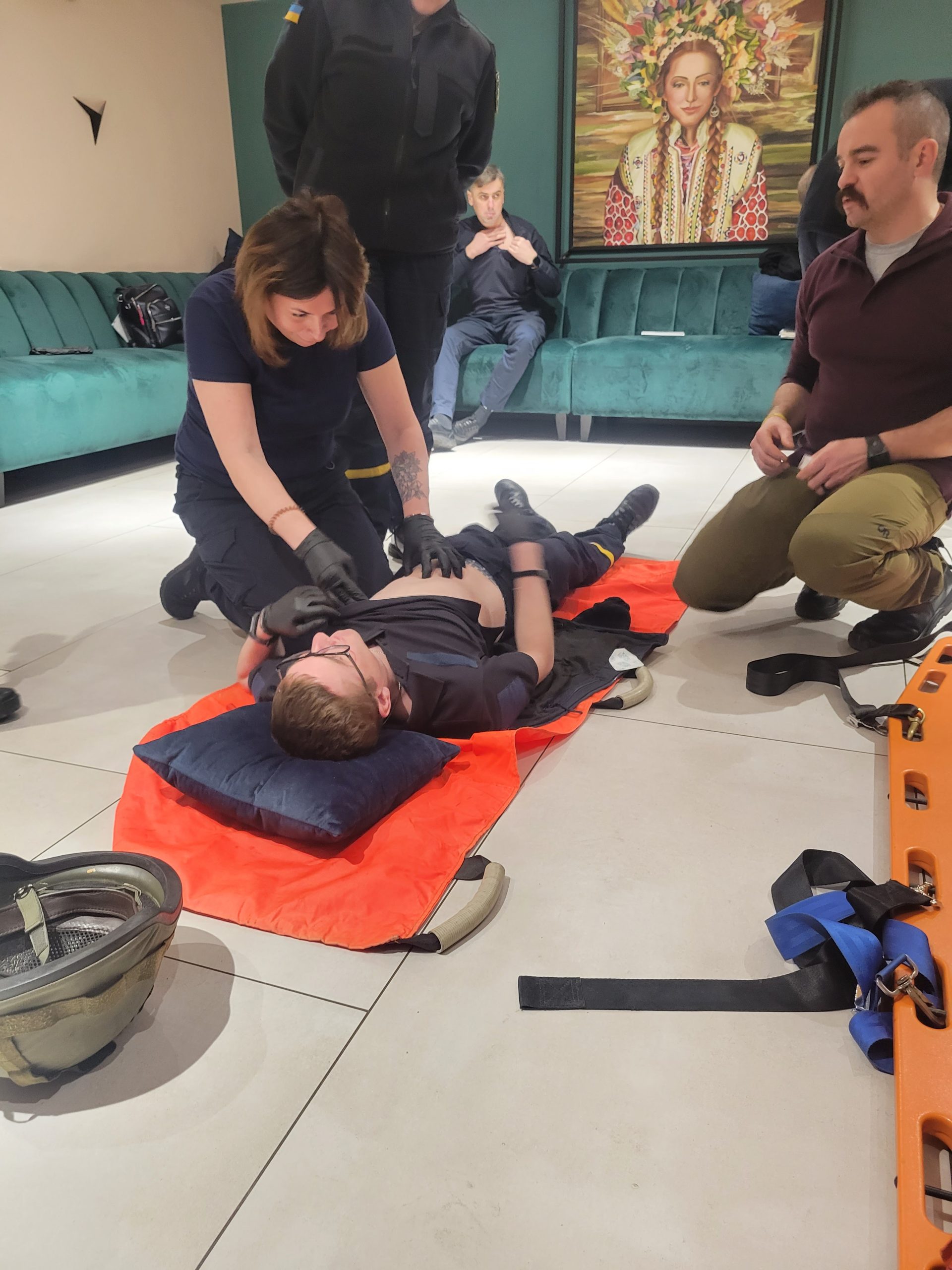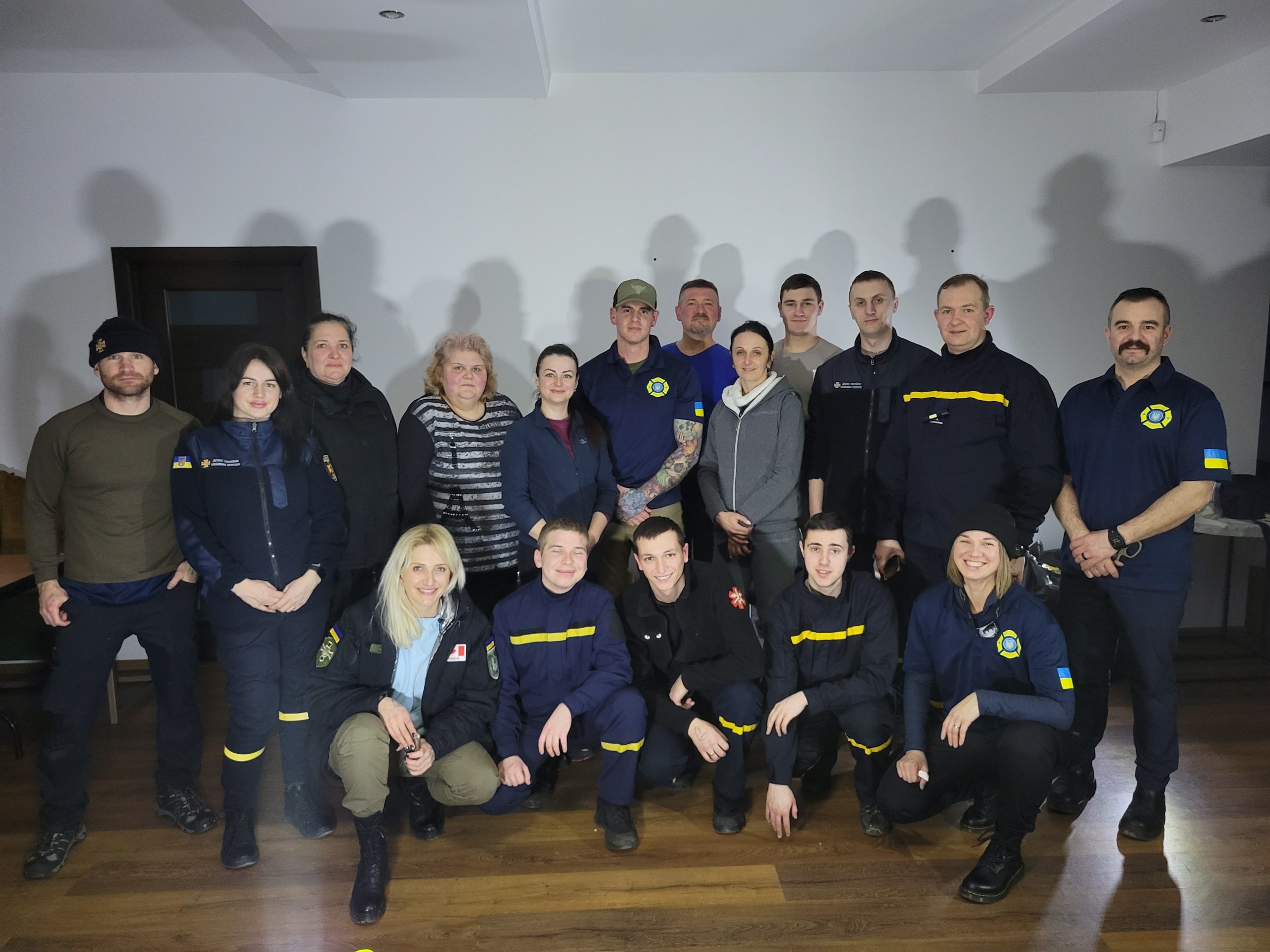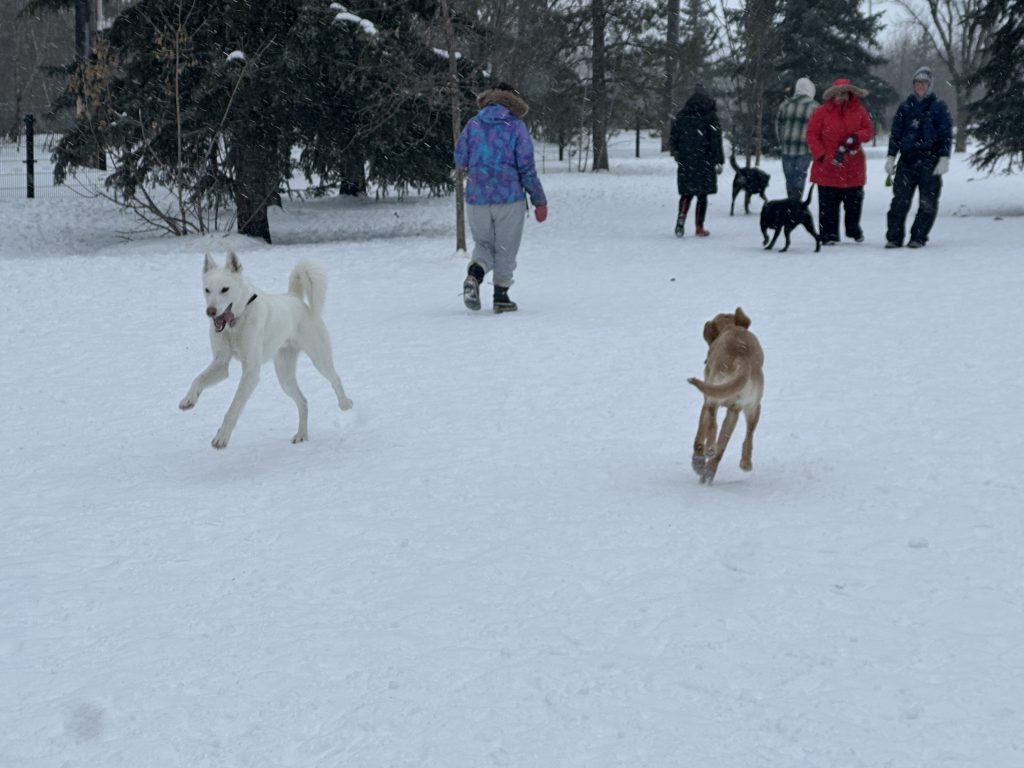Edmonton firefighters provide training to Ukrainian first responders

Posted February 20, 2023 10:35 am.
Last Updated February 20, 2023 10:42 am.
Ukrainian first responders learned valuable life-saving skills from Edmonton firefighters, who travelled to the war-torn country to share some of their knowledge.
“The goal was to train first responders, so first responders can go and train anyone and everyone,” said Anatoli Morgotch, a firefighter who went to Ukraine. “Anyone can be first on scene, so it’s very important for everyone and anybody who is first on scene to know proper techniques, and proper applications of life-saving things that are as simple as a tourniquet.”
The 12-day trip was organized by Firefighter Aid Ukraine. Edmonton firefighters taught Ukrainian first responders skills that can be used to help prevent casualties in a combat setting.
“We focused on the three big things that are considered preventable causes of death in a combat setting,” said firefighter Stephen Ferry. “The big three that we focused on was: hemorrhage control, which was using tourniquets, packing wounds, and good bandaging techniques. Then just basic airway maneuvers, like the recovery position or NPAs (nasopharyngeal airways), and then how to treat chest injuries, which is using chest seals. And with this group we were able to teach needle decompression under the supervision of Ukrainian physicians, with their blessing.
“Another big thing we focused on was keeping your trauma patients warm. If we have a hypothermic patient, their likelihood of survival decreases the colder they get.”
Ferry says the key to first response – especially in a situation like the one in Ukraine – is knowing the basics.
“You can have the best hospitals, and the best doctors in the world, but if you don’t know how to take care of a basic bleed, your patient will die long before they make it to those facilities,” he said. “And in Ukraine it’s certainly the case. You have longer transport times, you have mass casualty incidents which require more basic treatments to treat more numbers.”
“We were able to obtain mannequins which were very useful for wound packing, and for resuscitation, and students were able to practise hands-on in an environment that was simulated as closely to a real situation that they are facing there right now,” added Morgotch.
RUSSIAN INVASION OF UKRAINE: ONE YEAR LATER
- Biden visits Ukraine ahead of war anniversary: ‘Kyiv stands’
- US warns China not to send weapons to Russia for Ukraine war
- Canada plans for justice ahead of grim anniversary of war in Ukraine
- Key moments in a year of war after Russia invaded Ukraine
- Edmonton firefighters provide training to Ukrainian first responders
The mission hit close to home for Morgotch, who says they were located only half an hour away from his childhood home, which he visited for the first time in more than 26 years.
“I never thought I would have an opportunity to see the house I grew up in, I never thought I would have the opportunity to see my grandmother’s grave,” he said. “It was a very unique and very humbling experience. Many things have changed, but many, many things have stayed the same from my childhood, and it was hard to see. It was standing there today but it might be destroyed tomorrow.”
Firefighter Aid Ukraine has been delivering health care aid to Ukraine since 2014, and hopes to provide more training and equipment in the war-torn country as soon as next month.
The organization says they have delivered more than 140 tonnes of equipment to the country since Russia invaded nearly one year ago.
“We have no plans of stopping and we will help as long as we are healthy and can,” said Morgotch.
“If we are able to influence one life, or save one life, or make the difference for one person, it’s mission success,” said Ferry.










